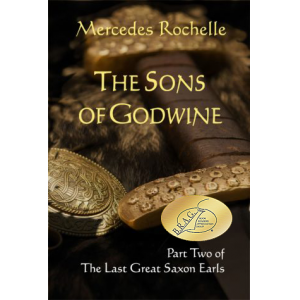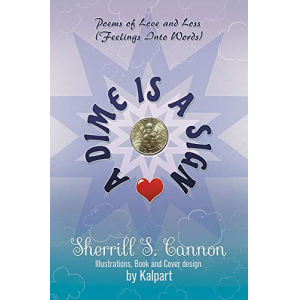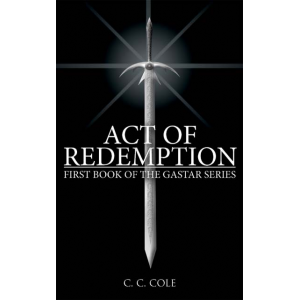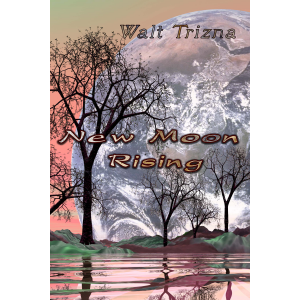National "Best Books 2009" Awards Press Release
🔗 http://www.usabooknews.com/bestbooks2009release.html- Author
- Book
- Story behind the book
- Media Links
- Reviews

Joellyn St. Pierre
About
I'm an ordained interfaith minister with a doctorate in divinity focused on Death as a Transition. For 25 years I enjoyed a professional career in theatre appearing 7 Broadway shows including “A Chorus Line,” and “Pippin,” as well as teaching, directing and choreographing nationwide. When many of my dearest friends and associates from theatre began dying from AIDS, my entire life changed. Death became an initiation into a new life; that of a death midwife. Since 1991, I've served those dying and their loved ones throughout the country with various hospices and AIDS organizations.
Now, in addition to publishing my book, I will be offering instruction and other supportive materials for The Art of Death Midwifery.

The Sons of Godwine: Part Two of The Last Great Saxon Earls
Description
<p>Emerging from the long shadow cast by his formidable father, Harold Godwineson showed himself to be a worthy successor to the Earldom of Wessex. In the following twelve years, he became the King's most trusted advisor, practically taking the reins of government into his own hands. And on Edward the Confessor's death, Harold Godwineson mounted the throne—the first king of England not of royal blood. Yet Harold was only a man, and his rise in fortune was not blameless. Like any person aspiring to power, he made choices he wasn't particularly proud of. Unfortunately, those closest to him sometimes paid the price of his fame.<br /><br />This is a story of Godwine's family as told from the viewpoint of Harold and his younger brothers. Queen Editha, known for her Vita Ædwardi Regis, originally commissioned a work to memorialize the deeds of her family, but after the Conquest historians tell us she abandoned this project and concentrated on her husband, the less dangerous subject. In THE SONS OF GODWINE and FATAL RIVALRY, I am telling the story as it might have survived had she collected and passed on the memoirs of her tragic brothers.<br /><br />This book is part two of The Last Great Saxon Earls series. Book one, GODWINE KINGMAKER, depicted the rise and fall of the first Earl of Wessex who came to power under Canute and rose to preeminence at the beginning of Edward the Confessor's reign. Unfortunately, Godwine's misguided efforts to champion his eldest son Swegn recoiled on the whole family, contributing to their outlawry and Queen Editha's disgrace. Their exile only lasted one year and they returned victorious to London, though it was obvious that Harold's career was just beginning as his father's journey was coming to an end.<br /><br />Harold's siblings were all overshadowed by their famous brother; in their memoirs we see remarks tinged sometimes with admiration, sometimes with skepticism, and in Tostig's case, with jealousy. We see a Harold who is ambitious, self-assured, sometimes egocentric, imperfect, yet heroic. His own story is all about Harold, but his brothers see things a little differently. Throughout, their observations are purely subjective, and witnessing events through their eyes gives us an insider’s perspective.<br /><br />Harold was his mother's favorite, confident enough to rise above petty sibling rivalry but Tostig, next in line, was not so lucky. Harold would have been surprised by Tostig's vindictiveness, if he had ever given his brother a second thought. And that was the problem. Tostig's love/hate relationship with Harold would eventually destroy everything they worked for, leaving the country open to foreign conquest. This subplot comes to a crisis in book three of the series, FATAL RIVALRY.</p>
Story Behind The Book
Media Links
Reviews
<span style="text-decoration:underline;"><strong><span style="font-size:16px;">Kirkus Discoveries</span></strong></span><br /><br />THE ART OF DEATH<br /> MIDWIFERY: An Introduction<br /> and Beginner’s Guide<br /> BookSurge (272 pp.)<br /> $18.99 paperback<br /> April 27, 2009<br /> ISBN: 978-1-4392-2906-4<br /><br /><strong><span style="font-size:16px;"></span></strong> <br />Doctor of interfaith Divinity and 18-year death midwife St. Pierre introduces the practice of<br />assisting the dying as they transition from the physical world to the nonphysical.<br />The book serves as a guide for professionals who frequently encounter death: nurses, hospice<br />workers, etc., as well as those preparing to serve someone close to them during the last days. St. Pierre<br />stresses the ability to sit with acceptance and love in the presence of pain and suffering and to honor the<br />choices and belief systems of the patients. She also teaches methods of matching their states of<br />consciousness to stay connected throughout the experience. Allowing for patients’ different<br />backgrounds, the author includes prayers, breathing and meditation techniques from various spiritual<br />traditions as proper preparation for the role as conduit for divine energy and of the creation of a sacred<br />space. A brief discussion of brainwave frequencies and the 13 phases of death—charted as “the Deathing Spectrum”—help to demystify the<br />process, as do stories from St. Pierre’s years of personal experience. Her tales of communication from beyond the grave may compromise her<br />credibility for some, despite the bit of scientific support she gives for communication with the unseen world. References to death guides from<br />myth and religion build appreciation for her profession, but it is when the author describes the intimate loss of loved ones (dogs, parents and best<br />friends) that she connects readers on an intimate level with gritty, nearly uncomfortable emotion.<br />An essential read for those ready to offer time, love and service during the big transition.






